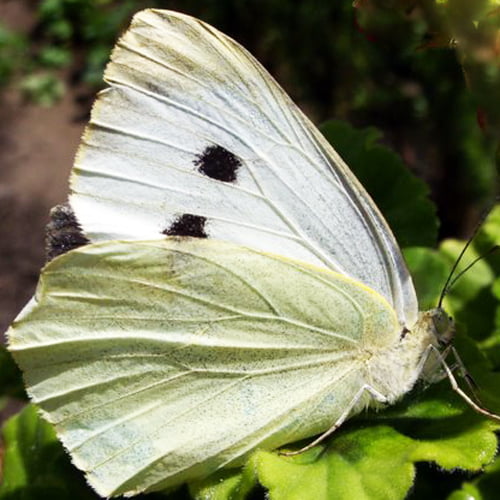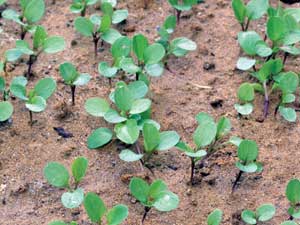Broccoli and Calabrese are from the Brassica family. Broccoli is the large, green head you buy in the shops but for some strange reason the plant we grow is called Calabrese. In general the ones which produce green heads or sprouts are called Calabrese. The ones producing purple or white ones are called broccoli. I know it is very confusing, it took me few years to come to terms with it.
Calabrese will produce the heads and spears in the same year, while broccoli will produce the following year from late winter to late spring depending on the variety. Sprouting Broccoli is a great vegetable for the so called hungry gap when there is nothing much in the garden to pick. See our range here.
Sowing the seeds
Sow the seeds in the spring late April, generally 4 weeks before the last expected frost. Use a seed tray or the best is some trays with modules. Plant 2 seeds per module just in case and keep them in moderate temperatures, Brassicas germinate fine at a temperature around 15 Celsius. Alternatively you can sow the seeds outside under protection in May, in a propagator or unheated greenhouse.
When the seedlings are large enough to handle you can transplant them into small individual pots and grow them on at the same cooler temperature. What I normally do is sow the seeds in larger modules in May and plant the seedlings out to their final position straight from the modules when the seedlings have 2 pairs of true leaves. This way I don’t have to bother with repotting. Sow the seeds and about 5 weeks later transplant to final position, simples.
Soil and location
Growing broccoli is best on a somewhat heavier and compact soil, just like all Brassica. Compact the soil down around the plants and if your seedlings gone a bit leggy you can put them deeper when planting out, as deep as where the first pair of leaves start on the stem. If you can choose a sheltered but sunny position, the plants will be in the soil for a long time and they don’t like much wind disturbance, I know it is hard to do on an allotment site but if you compact the soil down nicely the plants will be just fine. Sometimes in the winter I do have to stake my broccoli plants though if it gets very windy and the plants grow really big.
Protection
Watch out for slugs and snails as they love broccoli seedlings, I am not surprised they are really tasty, Id o like to nibble on some sprouting Brassica seeds too, just try it! Here you can find a few tips on how to protect your plants from the nasty slugs. Also you will have to protect your Calabrese and broccoli (all Brassicas) from pigeons. They love the young plants, sometimes I catch them watching me when planting out my broccoli; do they smell the plants I wonder? Get some canes, twine and horticultural netting to make protection out of; it’s fun and if you make a really sturdy one you can use for 2 or more seasons.
Later in the season you will have to protect the plants from cabbage whites too, it is best with a fine netting, so if you use a fine netting in the first instant against the birds it will protect your crop from the cabbage whites too. Growing broccoli takes a long time and some plants will be in the soil as long as 40 weeks, so choose the location wisely and I strongly advise you to make a nice protective netting.
Harvest
From late winter the spears will be ready to pick, normally the main one is the largest but one plant will produce lots and lots. The big head Calabrese (the one which is broccoli in the shop) will produce a large head in the middle in late summer – autumn and after you cut that leave your plants in place and they will produce smaller spears sometimes well into the winter. The best served steamed and slightly crunchy.
Broccoli and Calabrese are very healthy, many studies show that they have cancer preventing properties such as selenium and diindolylmethane. Also they are high in vitamin C and have antibacterial and antiviral properties.




